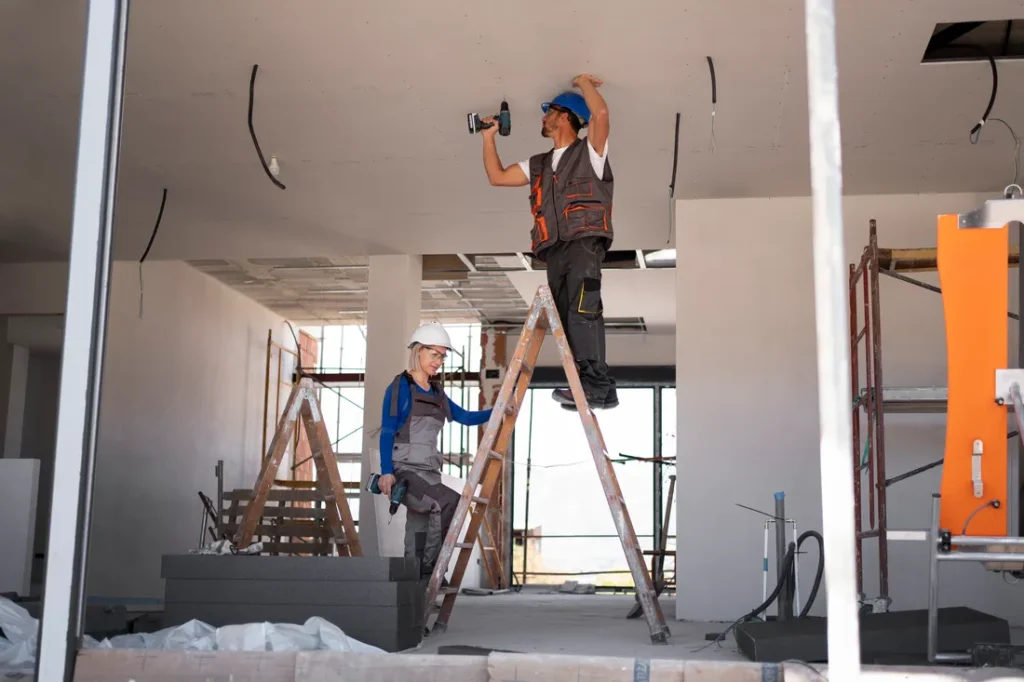Water damage can wreak havoc on homes and businesses, often striking without warning and leaving behind destruction that affects structural integrity, personal belongings, and even long-term health.
Whether it’s caused by flooding, broken pipes, or roof leaks, addressing water damage promptly and thoroughly is essential.
Water damage remediation is more than just drying wet surfaces. It’s restoring safety, comfort, and function while preventing future issues like mold.
This article takes you through each critical step of water damage remediation in NYC and shows how to navigate the path to recovery efficiently.
You may also like: 7 Day New York City Itinerary: Things to Do + Maps
Safety and Initial Assessment
Before taking action, ensure the affected space is safe to enter. Electrical hazards, compromised structures, and contaminated water pose serious risks.
Turn off the electricity to the area if there’s standing water and wear protective clothing if contamination is suspected.
Once safety is secured, begin assessing the scope of the damage. Identify where the water came from, what areas are affected, and whether the issue has stopped or is ongoing. It’s essential to document everything for insurance purposes.
Photos, written descriptions, and videos serve as evidence that may be necessary during claims processing.
Removing Standing Water
With the cause of water damage contained and documentation in progress, the focus shifts to removing standing water.
The tools required depend on severity, a mop and bucket may be sufficient for a small leak, while submersible pumps and wet vacuums are necessary for large-scale flooding.
Professional services may be called in for efficiency and expertise, especially when time is critical.
The longer water sits, the more extensive the damage becomes.
Recommended Read: Long Island vs Staten Island: Which One to Choose?
Drying and Dehumidification
Even after visible water is extracted, moisture remains. Walls, floors, furniture, and the air itself can harbor dampness that’s invisible yet dangerous.
Drying the space thoroughly is essential to stop warping, rot, and mildew. Powerful fans, air movers, and commercial-grade dehumidifiers work together to remove residual moisture.
This stage may take several days, depending on climate and materials involved. Temperature control also plays a role, heating cold spaces can accelerate evaporation.
The goal is to return the relative humidity indoors to safe levels and ensure no damp spots are left to fester.
Cleaning and Sanitizing
Water damage brings more than wetness, it can carry bacteria, chemicals, and microbes that contaminate your environment. Cleaning and disinfecting are crucial for health and safety.
Floors, walls, and furniture must be scrubbed and sanitized using antimicrobial solutions. Upholstery and textiles require specialized treatment or disposal, especially if they absorbed contaminated water.
Air ducts and HVAC systems should be inspected to prevent contaminated air circulation.
Some restoration teams use ozone treatments or fogging systems to disinfect hard-to-reach areas and remove lingering odors.
Recommended Read: Manhattan Zip Code Map, From 10001 To 10282
Structural Repairs

Once the space is clean and dry, attention turns to repairing the damage.
Structural components like drywall, flooring, insulation, and framing may need replacement. Doors and cabinets exposed to water can warp and may require rebuilding.
Depending on how widespread the damage is, renovations might extend to ceilings, plumbing, or wiring.
During this phase, many property owners take the opportunity to upgrade materials and improve resilience. Installing water-resistant flooring or adding backup sump systems enhances future protection.
In severe cases, rebuilding might involve local permits and inspections to ensure compliance with safety codes.
Restoring Personal Belongings
Water doesn’t discriminate; it damages furniture, appliances, artwork, and sentimental items. Restoring personal belongings can be emotionally challenging. Professional restoration services offer techniques like freeze-drying for documents, ultrasonic cleaning for electronics, and textile restoration for garments and linens.
Not all items can be saved, so prioritizing those with practical or emotional value helps manage loss.
Creating an inventory during cleanup supports both insurance claims and personal tracking. Restoring these belongings helps return a sense of normalcy, making your house feel like home again.
Preventing Mold Growth
Mold is the hidden menace that follows water damage. Its spores thrive in damp, poorly ventilated spaces and can become established in less than forty-eight hours.
Prevention begins during the drying phase, but vigilance must continue. Watch for discoloration on walls, strange smells, or increased allergy symptoms.
Using mold inhibitors, sealing porous surfaces, and improving ventilation reduces risk.
Homes located in humid climates may benefit from permanent dehumidification systems or moisture sensors that alert owners when levels rise.
Regular inspections of attics, basements, and crawl spaces catch early signs before they spiral into serious infestations.
You may also like: 15 Best Rooftop Bars in NYC
Final Inspection and Future Planning
A thorough inspection marks the end of the remediation process. Restoration professionals verify that moisture levels have stabilized, repairs are complete, and the space is safe to inhabit.
They may issue a certificate of clearance confirming that mold and contamination were handled appropriately.
However, recovery doesn’t end there, it continues with planning ahead. Install water alarms, upgrade plumbing, keep gutters clean, and consider backup generators or pumps for flood-prone regions.
Prevention is the most cost-effective defense against future water damage and offers peace of mind.
Main Takeaways
Water damage remediation is a process that demands speed, strategy, and perseverance. From the first moment of discovery to the final coat of paint, each step builds toward restoring safety, comfort, and normalcy.
While the damage may feel overwhelming at first, knowing what to expect and acting accordingly can make recovery smoother and more effective.
With the right tools, professionals, and mindset, homes and businesses can bounce back; often stronger than before.
